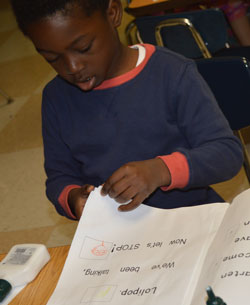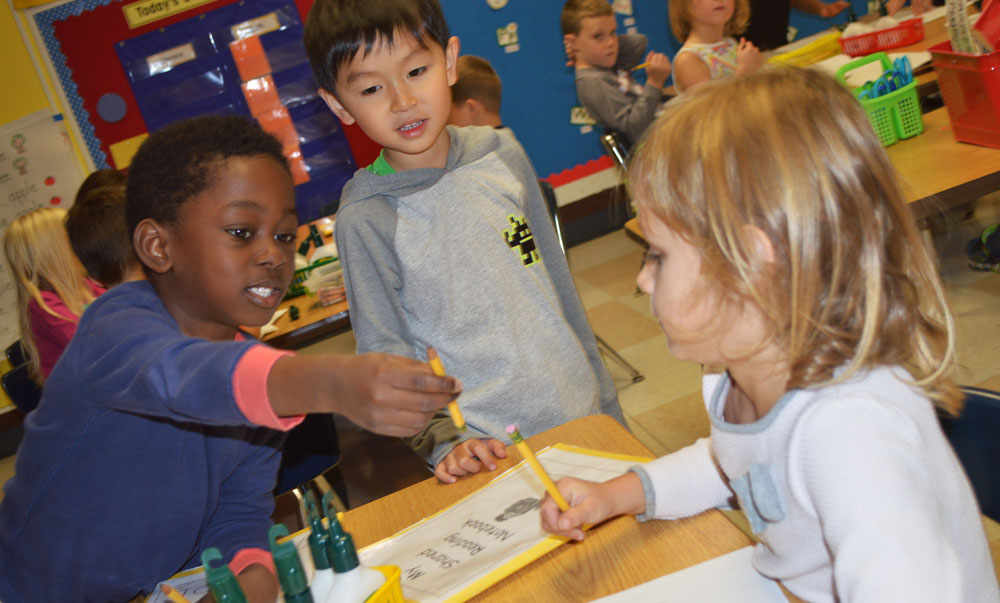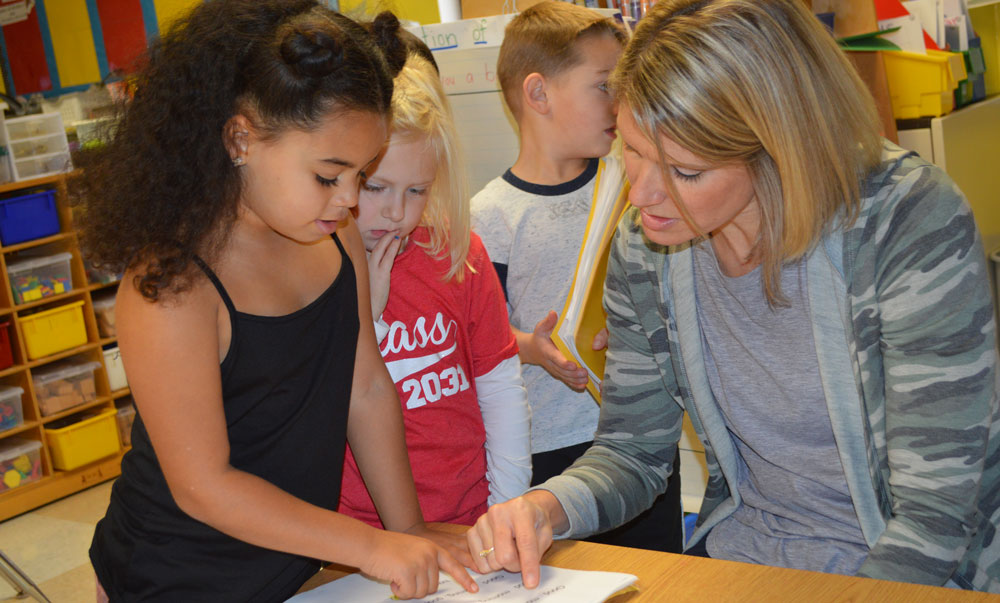It was a Friday in Robin Murphy’s East Oakview classroom, so her kindergartners knew what was coming. A new piece of reading was going to be revealed, one that they could put in shared reading notebooks they will add to all year.
But first, everyone gathered on a rug to sing a few songs they had been learning all week. As Murphy pointed to the words, a chorus of young wordsmiths recited:
Eat an apple,
Save the core.
Plant the seeds
And grow some more.
“Look at you, readers!” Murphy exclaimed. “Who can tell me what letter is making the sss sound in seeds?
Several hands went up, and when Elena Stelter was called on, she confidently identified “seeds.”

Next up was the good-morning song:
Good morning, good morning
Good morning to you.
Good morning, good morning,
And how do you do?
“I can read it with my eyes closed!” said Connor McCullough.
When Murphy pointed to the word “you” in the song, she asked for some ways students could remember how to spell it.
“Like my last name only without the ‘ng,’” said Kennedi Young.
Oh, those aha moments are golden, and it was written all over Murphy’s face.
“That is very good thinking right there. Very good thinking,” she told Kennedi.

Becoming Readers
The good-morning song would turn out to be the piece of reading they would paste into their notebooks, which they take home every Friday to read the new pages to their parents and whomever else they like. They bring them back on Mondays.

It is another way to bring literacy into the home, and provides an opportunity for students to share and show all that they are learning about being a reader with their families, Murphy said. “I always want to provide opportunities for my students to share, celebrate and be proud of their learning.”
During the week, the notebooks are kept in students’ individual book boxes that they read from daily, along with books they make themselves and their favorites from the classroom library.
Murphy said her students have kept shared notebooks since the district switched to all-day kindergarten seven years ago. She said students she has had in past years prepare their younger siblings for her class by reading their shared notebooks at home.
“Nothing supports the young child more as a successful reader, writer and speaker than building a rich repertoire of oral language,” she said. “When you call upon their language development during our shared reading time, you start to see children beginning to connect the spoken word to printed text.
“By taking familiar words to songs, cheers and poems, putting them into text and reading them over and over again, the kids begin to see themselves as readers. Essentially, it is through this work that they become beginning readers.”
CONNECT










